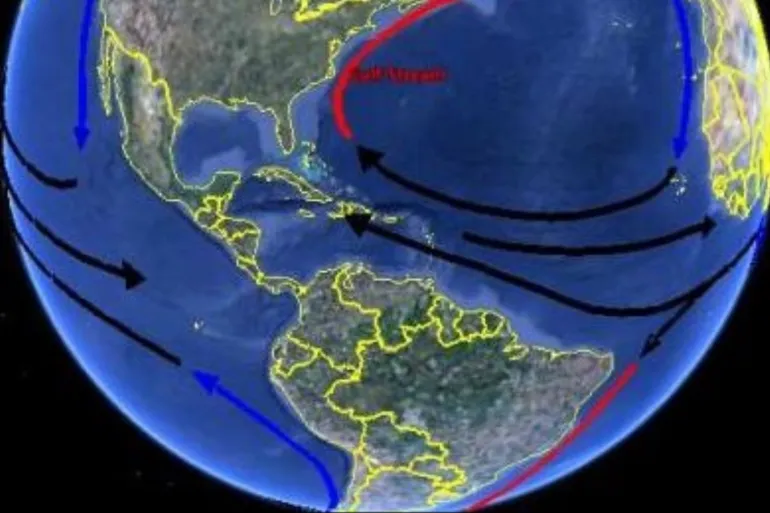The Southern Ocean Current is Shifting: A Hidden Change That Could Reshape Earth's Climate

New scientific research has revealed that the Southern Ocean current – the massive band of cold water that circulates around Antarctica – may change its position in the coming centuries, potentially causing widespread shifts in Earth's climate and ecosystems.
This current extends like a giant water ring flowing uninterrupted from west to east, carrying about 182 million cubic meters of water per second, making it one of the strongest currents on the planet.
The Hidden Climate Driver
The Southern current acts as a natural thermal regulator, transporting heat and nutrients between the Atlantic, Pacific, and Indian Oceans. Its strength relies on the fierce southwesterly winds that are unimpeded by land, giving it a constant energy that maintains the balance of the global climate.
However, recent studies suggest that this system is less stable than previously thought, and that a change in its position could alter the pathways of heat and carbon in the oceans.
Evidence from the Scotia Sea
In a study led by an international team of scientists, sediment samples were collected from depths of 3 to 4 thousand meters in the Scotia Sea north of Antarctica.
Analyses showed that the speed of the current during the last warm period 130,000 years ago was three times higher compared to the last millennium, reflecting its sensitivity to changes in Earth's orbit and axial tilt, which control the amount of solar radiation reaching the planet.
Worrying Results for the Future
The results indicate that the Atlantic climate change region shifted southward by about 600 kilometers during that period, bringing warm waters closer to the ice sheets on the continent. It is believed that this contributed to a sea-level rise of 6 to 9 meters at that time.
Scientists warn that the same scenario could repeat itself as current global warming continues, potentially reshaping the global climate in unexpected ways.